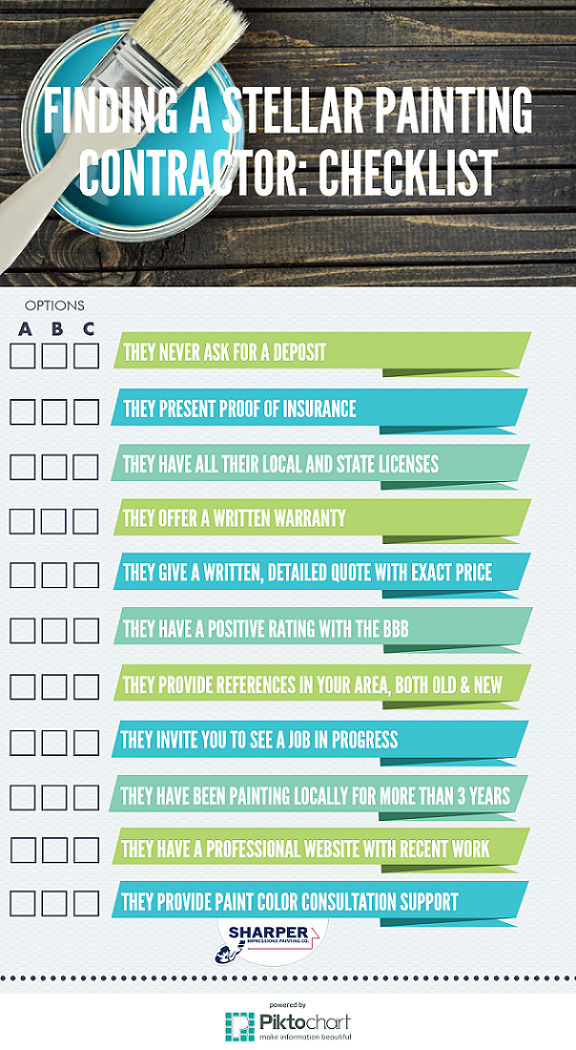Check Out Why Low-VOC Paints Are Becoming Vital For Much Healthier Households, But Are The Disadvantages Worth The Benefits? Discover The Facts Inside
Check Out Why Low-VOC Paints Are Becoming Vital For Much Healthier Households, But Are The Disadvantages Worth The Benefits? Discover The Facts Inside
Blog Article
Developed By-Melton McCann
When you think of repainting your home, you might forget the value of the paint's structure. Low-VOC paints are developed to decrease indoor air toxins, making them a smarter option for your household's wellness and the atmosphere. While they feature particular drawbacks, like longer drying out times, they also offer modern visual appeals and enhanced performance. You may question if the advantages truly outweigh the disadvantages, specifically when you're aiming for a fashionable coating. Understanding the full scope of low-VOC alternatives could change your viewpoint on your following paint job.
Comprehending Low-VOC Paints
When you pick low-VOC paints, you're selecting a product that releases less volatile organic compounds, which can be harmful to both your health and the setting.
VOCs are chemicals found in numerous paint items that can vaporize into the air and add to interior air pollution. By choosing low-VOC choices, you're lowering the number of these exhausts, making your home safer.
Low-VOC paints commonly include 50 grams per liter or less VOCs, compared to standard paints that can contain up to 250 grams per litre. This indicates that when you paint your home with low-VOC products, you're not just making a choice for aesthetic appeals; you're also taking a step towards a healthier indoor setting.
These paints come in a variety of coatings and shades, so you won't have to jeopardize on style. They're suitable for both exterior and interior projects, providing longevity and protection like their traditional equivalents.
Plus, many makers are currently concentrating on creating low-VOC solutions without giving up performance. Recognizing low-VOC paints empowers you to make enlightened options for your home and health while adding to environmental preservation.
Advantages of Low-VOC Options
Why select low-VOC alternatives for your painting jobs? To begin with, they're better for your health and wellness. Low-VOC paints discharge fewer unpredictable natural compounds, which implies you decrease your exposure to damaging chemicals. This is particularly vital if you're re painting indoors or have youngsters and pets at home.
You'll additionally appreciate the ecological advantages. These paints add much less to air contamination, making them a greener selection. By choosing low-VOC alternatives, you're sustaining sustainable techniques and aiding to produce a much healthier world.
Another perk is the boosted indoor air quality. Low-VOC paints assist maintain fresher air in your house, which can cause a more comfortable living area.
And also, exterior painting happy valley of low-VOC paints are just as sturdy and resilient as conventional choices, so you won't sacrifice top quality for safety and security.
Finally, home painters in oregon 'll find a wide range of colors and finishes available in low-VOC formulas, so you can still accomplish the look you want without compromising on your health or the setting.
Selecting low-VOC paints is a clever, responsible decision for your paint tasks.
Potential Disadvantages to Take Into Consideration
While low-VOC paints supply various advantages, there are some potential disadvantages to bear in mind. One significant issue is their efficiency contrasted to conventional paints. https://interiorpaintersnearme66554.blogvivi.com/33871209/for-excellent-paint-touch-ups-a-sharp-focus-on-detail-and-advanced-methods-are-important-learn-the-actions-to-attain-flawless-results -VOC choices may not constantly give the exact same degree of sturdiness and coverage, which can bring about more constant touch-ups or a demand for extra layers. This can be frustrating and taxing during your painting job.
Another concern is the drying time. Low-VOC paints usually take longer to completely dry than their high-VOC counterparts, which can prolong your task timeline. If you're on a limited routine, this could be a drawback to take into consideration.
You must also know that low-VOC paints can occasionally have a various finish or structure. If you're going for a specific visual, ensure to check examples to guarantee the result fulfills your expectations.
Lastly, while low-VOC paints are generally safer, they can still produce some fumes. Appropriate ventilation is vital during and after application, so be prepared to air out your room effectively.
Conclusion
Finally, low-VOC paints are a smart option for anyone seeking to create a much healthier home setting. They minimize interior air pollution and are safer for your family members, especially if you have kids or pet dogs. While you might deal with more constant touch-ups and longer drying out times, the benefits far exceed these drawbacks. With fashionable options offered, switching to low-VOC paints is an action towards lasting living that you won't be sorry for.
